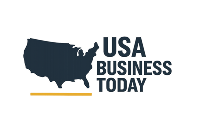As the U.S. economy shows signs of slowing growth and uncertainty looms, small businesses across the country are bracing for a possible recession.
Compounding these concerns are the lingering effects of tariffs imposed during the Trump administration, which continue to influence supply chains, costs, and market dynamics.
This combination of economic slowdown and trade-related challenges is forcing small businesses to rethink strategies, tighten operations, and seek resilience in an unpredictable environment. Here’s a closer look at how America’s small businesses are preparing for these headwinds and what the impact of tariffs means for their outlook.
The Economic Outlook: Recession Fears on the Rise
After a decade of steady economic growth, recent indicators signal caution. According to the National Bureau of Economic Research, the probability of a recession in the next 12 months has risen above 30%. The Federal Reserve’s interest rate hikes aimed at controlling inflation have also contributed to slowing consumer spending and increased borrowing costs.
Small businesses are especially vulnerable. Representing over 99% of all U.S. businesses and employing nearly 60 million people, they face tighter credit markets and shifting consumer demand. A 2024 survey by the U.S. Chamber of Commerce found that 65% of small business owners expect an economic downturn within the year, with many already cutting back on hiring and expenditures.
The Role of Trump-Era Tariffs in Current Challenges
The tariffs introduced during the Trump administration targeted imports from countries such as China, with the goal of protecting American industries. While some tariffs have been reduced or rolled back, many remain in place or have led to retaliatory measures, creating ongoing uncertainty.
Experts like John Graham, an economist with the Small Business Administration, note, “Tariffs have created a ripple effect, driving up costs for materials and products that small businesses rely on. When combined with economic downturns, this creates a perfect storm that demands strategic adjustments.”
Key impacts include:
- Increased Supply Chain Costs: For example, tariffs on steel and aluminum raised prices for manufacturers and construction businesses, increasing production costs.
- Unpredictable Pricing: Small businesses struggle to forecast expenses due to fluctuating tariff policies, complicating budgeting and pricing decisions.
- Sourcing Challenges: Many are shifting to domestic suppliers or alternative countries, but often at higher costs or with longer lead times.
How Small Businesses Are Preparing
Small business owners are responding proactively to these economic and trade pressures by adopting several strategies to build resilience:
1. Cost Management and Efficiency
Cutting unnecessary expenses and streamlining operations is a priority. According to a 2024 report by the National Federation of Independent Business (NFIB), 54% of small business owners have implemented cost-saving measures, including renegotiating supplier contracts and adopting technology to automate tasks.
2. Diversifying Supply Chains
In response to tariff-driven disruptions, 48% of businesses surveyed by the U.S. Small Business Administration reported diversifying their suppliers in the last year, seeking alternatives both domestically and internationally.
3. Building Cash Reserves
Cash flow management is critical. A recent U.S. Bank survey revealed that 70% of small businesses consider having three to six months of operating expenses in reserve essential to weather economic uncertainty.
4. Adjusting Pricing Strategies
Though sensitive to market competition, 38% of small businesses have cautiously increased prices to offset higher costs, balancing the risk of losing customers with the need to maintain profitability.
5. Expanding Online Presence
With shifting consumer behaviors, small businesses are investing more in digital sales channels. Shopify reports a 25% increase in small business e-commerce adoption in 2024, as companies seek to reach wider audiences and reduce reliance on physical storefronts.
6. Accessing Financial Assistance
Government programs have become vital. The Small Business Administration (SBA) continues to offer programs such as the Economic Injury Disaster Loan (EIDL) and targeted grants to help small businesses maintain liquidity. Additionally, tax incentives and workforce development programs provide support for businesses adapting to the evolving market.
Government Support and Resources
Understanding and leveraging government assistance can be a lifeline. Key programs include:
- SBA Economic Injury Disaster Loans (EIDL): Low-interest loans for businesses affected by economic downturns.
- Paycheck Protection Program (PPP) (when active): Offers forgivable loans to keep employees on payroll.
- State and Local Grants: Many states provide targeted relief funds for small businesses impacted by tariffs or recession.
- Workforce Training Grants: Helps businesses upskill employees for new technologies or market demands.
- Export Assistance Programs: For businesses looking to diversify markets, the U.S. Export-Import Bank provides financing and support.
Business owners are encouraged to visit SBA.gov and local economic development offices to explore available options.
Expert Insights: Navigating Uncertainty
Sarah Johnson, a small business consultant with over 15 years of experience, advises, “The key to resilience is adaptability. Small businesses that invest in understanding their costs, diversifying supply chains, and embracing technology are better positioned to weather economic storms.”
Similarly, economist Dr. Michael Liu notes, “While tariffs have complicated the landscape, they also highlight the importance of strategic sourcing and innovation. Businesses that pivot effectively can find new growth opportunities even in challenging times.”
America’s small businesses stand at a critical crossroads. With the twin challenges of a potential recession and lingering tariff impacts, owners must be strategic, proactive, and resourceful. By managing costs, diversifying suppliers, strengthening cash reserves, and leveraging government programs, small businesses can build resilience against uncertainty.
For policymakers, supporting small businesses through flexible assistance and reducing trade uncertainties remains vital to preserving the economic engine that these enterprises represent.
As conditions continue to evolve, staying informed and agile will be essential for small businesses aiming not just to survive but to thrive.





